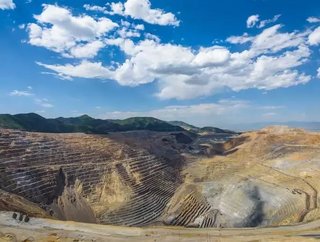Rio Tinto halts operations at Kennecott following earthquake

Rio Tinto’s Kennecott mine near Salt Lake City, Utah, has been impacted by a 5.7-magnitude earthquake close to the town of Magna.
All employees have been safely accounted for and evacuated from the potential risk areas. At this stage the company has identified limited damage to the operation or risk to the surrounding community.
A detailed inspection of the complex is currently being conducted, in conjunction with the local emergency services and Utah Department of Transportation.
As a precaution, all operations have been temporarily halted and, in line with standard procedures pre-agreed with the Utah Department of Transportation, State Road 201 has been temporarily closed while the inactive South (Magna) tailings storage facility is inspected.
This is an inactive historic tailings storage facility that is stable and being actively monitored and managed, under a plan reviewed and endorsed by a panel of independent geotechnical experts and Utah’s dam regulatory authorities.
Rio Tinto Copper & Diamonds chief executive Arnaud Soirat commented: “The safety of our employees and wider community is our first priority and having ensured that all our employees are safe and the operations are shut, we are now working with the local emergency services and regulators to ensure the asset is safe before resuming any operations.”
SEE ALSO:
Rio Tinto Oyu Tolgoi operation slowed by coronavirus
Rio Tinto investing $1bn to meet new climate change targets
Inmarsat delivers remote tailings dam monitoring with real-time analysis
Read the latest issue of Mining Global here
In December Rio Tinto announced a $1.5bn investment to expand the Kennecott copper mine extending operations to 2032.
The move reflects a growing trend for miners to invest in strategic mineral projects across the United States. The investment will further extend strip waste rock mining and support additional infrastructure development in the second phase of the South Wall Pushback project, to allow mining to continue into a new area of the ore body and deliver close to one million tonnes of refined copper between 2026 and 2032. It will also allow further exploration of the deposit and options for mine life extension.
For more insights on mining topics - please take a look at the latest edition of Mining Global.
- Gécamines & Ivanhoe Restart Kipushi Zinc-Copper-Silver MineSupply Chain & Operations
- First Quantum contracts with MECS to cut emissionsSupply Chain & Operations
- Report predicts a looming copper supply gapSupply Chain & Operations
- Chile details national lithium strategy amid global demandSupply Chain & Operations






